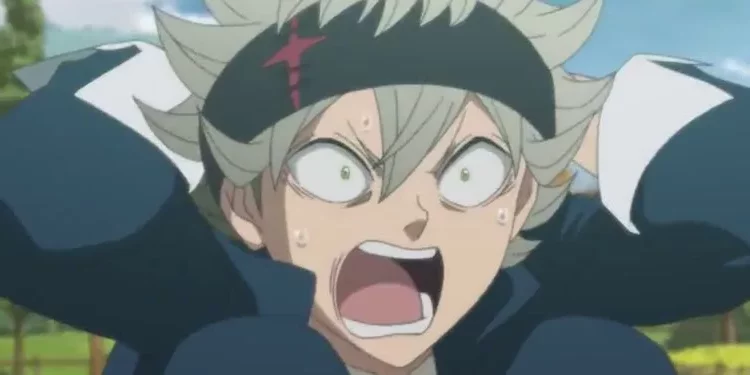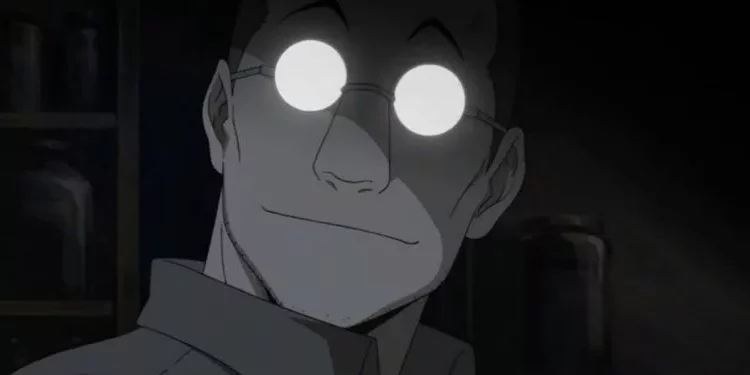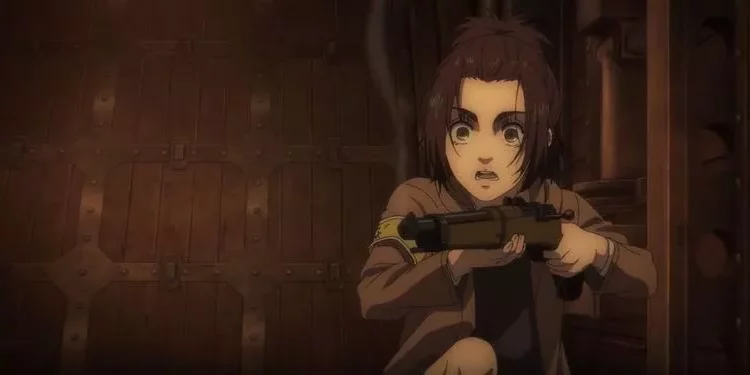Certain anime characters prove to be universally unlikable, often succeeding in uniting the entire anime community against them. While the realm of Japanese animation predominantly thrives with adored and captivating characters spanning various genres – from sincere shojo heroines to iconic shonen protagonists, and all the way to widely supported sidekicks and occasionally, even relatable antagonists – there exists a subset of characters that fail to gain affection.
Among these less favored anime characters, some manage to polarize their respective fanbases. This could stem from instances where a character commits a reprehensible act yet attempts partial redemption, exemplified by the case of Endeavor, the flame hero from My Hero Academia. Conversely, certain anime characters experience a consistent wave of disdain, sometimes to an intense degree, positioning them as virtual targets for the collective animosity of fans. Frequently, the ire directed at these characters is warranted.
Uzaki Hana (Uzaki-Chan Wants To Hang Out!)

Uzaki-Chan Wants to Hang Out! possesses a devoted fanbase, yet a considerable portion of anime enthusiasts finds themselves disliking it, mainly due to the character Uzaki Hana. Uzaki is crafted to embody the “irksome yet charming” persona, yet in the eyes of her critics, this equilibrium falls short.
In contrast to the relatively favored Hayase Nagatoro, who portrays an impish and rebellious persona as a romantic interest, the reception towards Uzaki Hana within the anime community is notably less charitable. Although Uzaki’s intentions are sincere, and she genuinely cares for Shinichi Sakurai, her behavior comes across as exceedingly bothersome and vexing, which many anime enthusiasts find challenging to tolerate.
Yamori (Tokyo Ghoul)

Tokyo Ghoul is an anime of horror-themed action, meant for more mature audiences, and those who follow it anticipate a challenging experience. Despite this expectation, fans hold a strong aversion towards the aggressive antagonist Yamori, who adopts the moniker Jason and dons a fearsome hockey mask reminiscent of the infamous killer from Friday the 13th.
Yamori stands out as particularly vicious and cruel, even when compared to other similar beings known as ghouls. His actions include subjecting Ken Kaneki to prolonged torture, spanning several days, and he further deceived Ken by coaxing him into his chamber of torment. Eventually, Ken managed to break free from captivity and counterattacked, resulting in Yamori’s demise. In a bid to grow stronger, Ken even resorted to cannibalizing Yamori.
Rachel (Tower Of God)

Numerous anime enthusiasts harbor strong resentment towards the blonde character Rachel in Tower of God. Her notoriety has reached such heights that newcomers often question the cause of the uproar. Initially, Rachel projected an image of decency, but her true feelings of jealousy towards Bam emerged, leading her to callously push him off the Tower, putting his life at risk. Subsequently, Rachel feigned physical disability to elicit sympathy and secure assistance in ascending the tower.
The core of Rachel’s unpopularity rests on her self-centered, manipulative, and deceitful conduct. This is especially exacerbated by her exploitation of society’s compassion for the disabled, solely for her personal gain.
Asta (Black Clover)

Asta, the lead character who wields swords in Black Clover, presents an intriguing example within the category of less favored anime figures. Devoted viewers who follow most of Black Clover observe Asta’s evolution into a more appealing and captivating personality. However, numerous enthusiasts of both the manga and anime never progressed to that point.
Instead, a significant portion of fans halted their engagement with Black Clover midway, during a period when Asta was at his most bothersome state, embodying a loud and typical archetype of a shonen hero, marked by excessive shouting. For numerous aficionados of anime, Asta’s defining trait remains confined to this, contributing to his unfavorable reputation, regardless of its fairness.
Lilia Rainworth (I’m The Villainess, So I’m Taming The Final Boss)

“I’m the Villainess, So I’m Taming the Final Boss” stands as a notably favored isekai anime featuring Aileen Lauren d’Autriche, the protagonist with a villainous role, who garners admiration for her benevolent, sincere, and supportive nature, despite her antagonistic role. Aileen’s dynamic with the kuudere character Claude is highly regarded, forming a remarkable pairing. However, complications arise with the introduction of Lilia.
Lilia Rainworth, much like Aileen, becomes transported into the world of an otome game. However, a significant contrast lies in Lilia’s perspective. Unlike Aileen, Lilia perceives the game’s characters as mere playthings for experimentation, lacking genuine humanity. This leads her to repeatedly instigate attempts to drive a wedge between Aileen and Claude, primarily to observe Aileen’s reactions and decisions.
Princess Malty Melromarc (The Rising Of The Shield Hero)

The royal family of the Melromarc kingdom in The Rising of the Shield Hero is a mixture of contrasting characters. The queen stands as a noble, sagacious, and compassionate figure who evolved into one of Naofumi Iwatani’s most valuable allies. Additionally, her daughter Melty also contributed in a helpful manner. However, a different narrative unfolds when it comes to the queen’s spouse and elder daughter.
The king and Princess Malty engaged in a scheme to exile Naofumi from the realm. Malty, in particular, resorted to malicious falsehoods and accusations, orchestrating the permanent tarnishing of Naofumi’s reputation. Remarkably, she displayed no remorse for her actions, leading to a discord between her and her mother, the queen. Moreover, the repercussions of this plot extended further as undermining Naofumi’s standing consequently weakened the kingdom’s defenses against the impending Waves.
Shou Tucker (Fullmetal Alchemist: Brotherhood)

Even though the Fullmetal Alchemist: Brotherhood anime debuted back in 2009, the unsettling actions of Shou Tucker continue to haunt the memories of anime enthusiasts. Operating under the moniker of the “sewing life alchemist,” Tucker, a state alchemist, remains infamous for his heinous deeds. When driven to desperate measures for results, his own family bears the gruesome consequences.
Tucker obtained his alchemical certification through a monstrous act—by fusing his wife with an animal, resulting in a chimera that pleaded for an end to its existence. A few years later, he further perpetrated his horrifying experiments by merging his cherished daughter, Nina, with their loyal dog, Alexander, resulting in yet another grotesque chimera. This abomination horrified the likes of Edward, Alphonse, and even Scar. Ultimately, before the case could proceed to trial, Scar took matters into his own hands and ended Tucker’s life.
Danzo Shimura (Naruto)

On the surface, Danzo Shimura, an esteemed Leaf ninja from Naruto, appears to possess honorable intentions. He and his Root/Foundation organization are steadfast in safeguarding the Hidden Leaf Village without seeking acknowledgment. Yet, there’s a darker side to Danzo beyond this seemingly noble purpose.
Danzo embodies a demeanor that is frigid, exploitative, and merciless. His treatment of subordinates mirrors that of disposable instruments, even in the context of the ninja world’s norms. His clashes with Tsunade, who served as Hokage, were frequent due to their differing perspectives. Danzo’s aspirations involved confining Naruto Uzumaki within the village as a means to shield him from the Akatsuki threat. However, his methodologies proved excessively extreme.
In the end, Danzo met his demise at the hands of Sasuke Uchiha, bringing an end to his contentious legacy.
Gabi Braun (Attack On Titan)

Gabi Braun, a warrior candidate, possesses qualities that could potentially render her a commendable and slightly sympathetic character, save for two pivotal aspects. Unfortunately, her impulsive and enthusiastic disposition as a young soldier has led her astray in the eyes of Attack on Titan enthusiasts. The actions she undertook cross a line that is difficult for fans to overlook.
Gabi’s act of sneaking onto an airship and fatally shooting the beloved Sasha Braus serves as the catalyst for the strong collective resentment she now faces within the fandom. This deed instantaneously united fans in condemnation against her. Furthermore, Gabi’s steadfastly brainwashed perspective regarding her fellow Eldians amplifies the disdain directed towards her. Her unyielding belief that they are malevolent beings deserving punishment or extermination adds another layer of unpopularity to her character.
Muzan Kibutsuji (Demon Slayer)

While certain anime antagonists manage to amass popularity despite their malevolent actions – such as the cunning Sosuke Aizen from Bleach or the yandere character Himiko Toga in My Hero Academia – Muzan Kibutsuji stands in stark contrast as a figure widely detested. As Demon Slayer’s principal villain, he is accountable for the brutal extermination of the Kamado family.
Even in comparison to the standards set by anime villains, Muzan stands out for his callous, egocentric, and uncompassionate demeanor. His actions seem driven by a propensity to propagate suffering and anguish merely because he can. While fans may find amusement in his resemblance to the late Michael Jackson, there exists little to find endearing or admirable about Tanjiro Kamado’s arch-nemesis.
Minoru Mineta (My Hero Academia)

Step by step, the student hero Minoru Mineta from My Hero Academia seems to be incrementally building a case for himself. Gradually, he displays increased courage on the battlefield, secures respectable grades, and occasionally exhibits shrewdness in combat scenarios. Notably, he even managed to outwit the R-rated hero Midnight during a confrontation. However, despite these redeeming qualities, he remains an easy character to harbor negative feelings toward.
Minoru is notably burdened with a propensity for perversion. His actions, such as rifling through a girl’s underwear drawer and leering at its contents, contribute to his unappealing image. He doesn’t shy away from attempting to catch glimpses of girls in vulnerable moments, engaging in a familiar anime trope of peeping into the bath. Additionally, he’s acknowledged for his susceptibility to fear, often succumbing to panic in situations that go awry. Collectively, these characteristics are likely to grate on the nerves of the majority of fans.
Sugou Nobuyuki/Oberon (Sword Art Online)

In reality, Sugou Nobuyuki held a significant position at RECT Inc., and he was once engaged to Asuna Yuuki. In the virtual realm of the game, he adopted the alias Oberon, drawing inspiration from Shakespeare’s A Midsummer Night’s Dream. He desired to position Asuna as his Titania, a reference to the fairy queen in the play. However, both Kirito and the Sword Art Online fan community vehemently opposed his intentions.
Oberon lacked any positive attributes, including bravery or prowess in combat. He exhibited repulsive behavior, treating Asuna in an egregiously disrespectful manner. His character further deteriorated due to his cowardice when confronted by Kirito in battle, ultimately leading to his defeat within the game. In a subsequent attempt to harm Kirito in the real world, he proved unsuccessful.
Akito Sohma (Fruits Basket)

There exist evident reasons underlying Akito Sohma’s behavior in Fruits Basket; nevertheless, these explanations fail to prevent anime enthusiasts from harboring dislike towards her. As a character, Akito embodies the traits of a bothersome and exceedingly dysfunctional antagonist commonly found in shojo anime. She holds the position of the “god” overseeing the zodiac animals and exhibits pronounced issues with control and attachment.
Akito’s demand for unwavering obedience and loyalty from the Sohma clan stands as a prominent facet of her character. Any form of defiance, no matter how minor, quickly triggers her temper, leading to tantrums. Employing a combination of verbal, emotional, and occasionally physical abuse, she employs these tactics as forms of punishment and intimidation, which further isolates and distances the Sohma family members. This dynamic is particularly evident in her interactions with Kyo, Yuki, and Momiji.
Interestingly, Akito’s mother, Ren, shares similar toxic qualities, if not surpassing them. This familial dynamic contributes to a broader pattern of dysfunction and strife within the Sohma family.
Orihime Inoue (Bleach)

There are many anime characters disliked by more people than Orihime Inoue. However, Orihime does have a fair number of critics due to a few main reasons. In the Bleach story, she’s a likable and faithful friend, displaying noteworthy courage, which makes many Bleach characters like her. While several Bleach fans strongly support Ichigo’s relationship with Rukia, Orihime established her claim on Ichigo, as seen in the manga’s final chapter. This alteration upset many fans who were invested in this pairing. Additionally, Orihime often gets teased for repeatedly calling out “Ichigo!” or “Kurosaki-kun!” too frequently during fights, expressing her worry.
Mami Nanami (Rent-A-Girlfriend)

Mami Nanami, a secondary adversary in the romantic comedy anime “Rent-a-Girlfriend,” has earned strong animosity from anime enthusiasts, even though she doesn’t possess the traits of a violent supervillain. Despite the male protagonist, Kazuya, not being the ideal character, fans still sympathized with him when Mami callously ended their relationship for someone else.
Mami’s actions initiate the entire storyline, yet Rent-a-Girlfriend fans didn’t express gratitude for her role. She hides her manipulative and confrontational nature behind a false facade of sweetness, actively working to create discord between Kazuya and Chizuru for motives that remain unclear, ultimately causing harm to all involved parties.
Spandam (One Piece)

In One Piece, a talent exists for crafting numerous vile and fierce antagonists who manage to evoke a degree of sympathy or, at the very least, come across as intriguing and oddly endearing. This is exemplified by characters like Sir Crocodile and even Doflamingo. However, this pattern doesn’t extend to the detestable Spandam, a significant antagonist during the Water 7 saga.
Spandam is a self-absorbed, egotistical, and abusive member of the Marine organization who centers everything around his own importance and achievements. He displays outright cruelty towards Nico Robin while holding her captive. In earlier events, Spandam antagonized Tom, Franky’s mentor, and unjustly framed him for a grievous crime, further fueling the One Piece fanbase’s animosity towards him.
Ren Yamai (Komi Can’t Communicate)

The delightful “Komi Can’t Communicate” anime also serves as a light-hearted satire of various romance-comedy anime conventions and character patterns, exemplified by figures like the timid library girl Himiko Agari and the competitive Makeru Yadano. However, even within the Komi anime’s milder content, the notion of a yandere remains unsettling. Despite employing PG-rated humor to temper its impact, Ren Yamai remains an unsavory individual with no valid justification for her actions, which significantly diminishes her popularity. She engages in threats, bullying as a popular girl, inappropriate advances towards Shoko Komi, and has even gone so far as to abduct Hitohito Tadano.
Boruto Uzumaki (Boruto: Naruto Next Generations)

Despite the original Naruto anime featuring characters like Sakura Haruno and Danzo Shimura who were not well-received, fans held a strong affection for the determined protagonist, the tenacious underdog Naruto Uzumaki. Oddly, when Naruto’s son, Boruto, took the lead role in “Boruto: Naruto Next Generations,” he quickly became one of shonen anime’s most disliked characters.
Boruto Uzumaki possesses remarkable power and skill, but this very competence has led fans to view him unfavorably, categorizing him as a sort of Mary Sue. His unpopularity also stems from his spoiled demeanor, which, in contrast to his father’s beginnings, lacks justification. Boruto grew up in a caring and supportive family, making his rebellious behavior seem puzzling and unwarranted.
Near (Death Note)

“Death Note” features one of anime’s most renowned adversaries, the peculiar and brilliant detective L Lawliet. Following Light’s triumph over L, the narrative advanced into a briefer second part, which garnered notably less favor from fans, partly due to the antagonists introduced.
Mello merely came across as a criminal delinquent, while his kuudere equivalent, Near, was perceived as a weaker and less captivating replacement for the original L. Near lacked the endearing idiosyncrasies that made L memorable, resulting in scenes and dialogues that failed to leave a comparable impression. Consequently, enthusiasts often dismiss him as little more than an aspiring L imitator.
